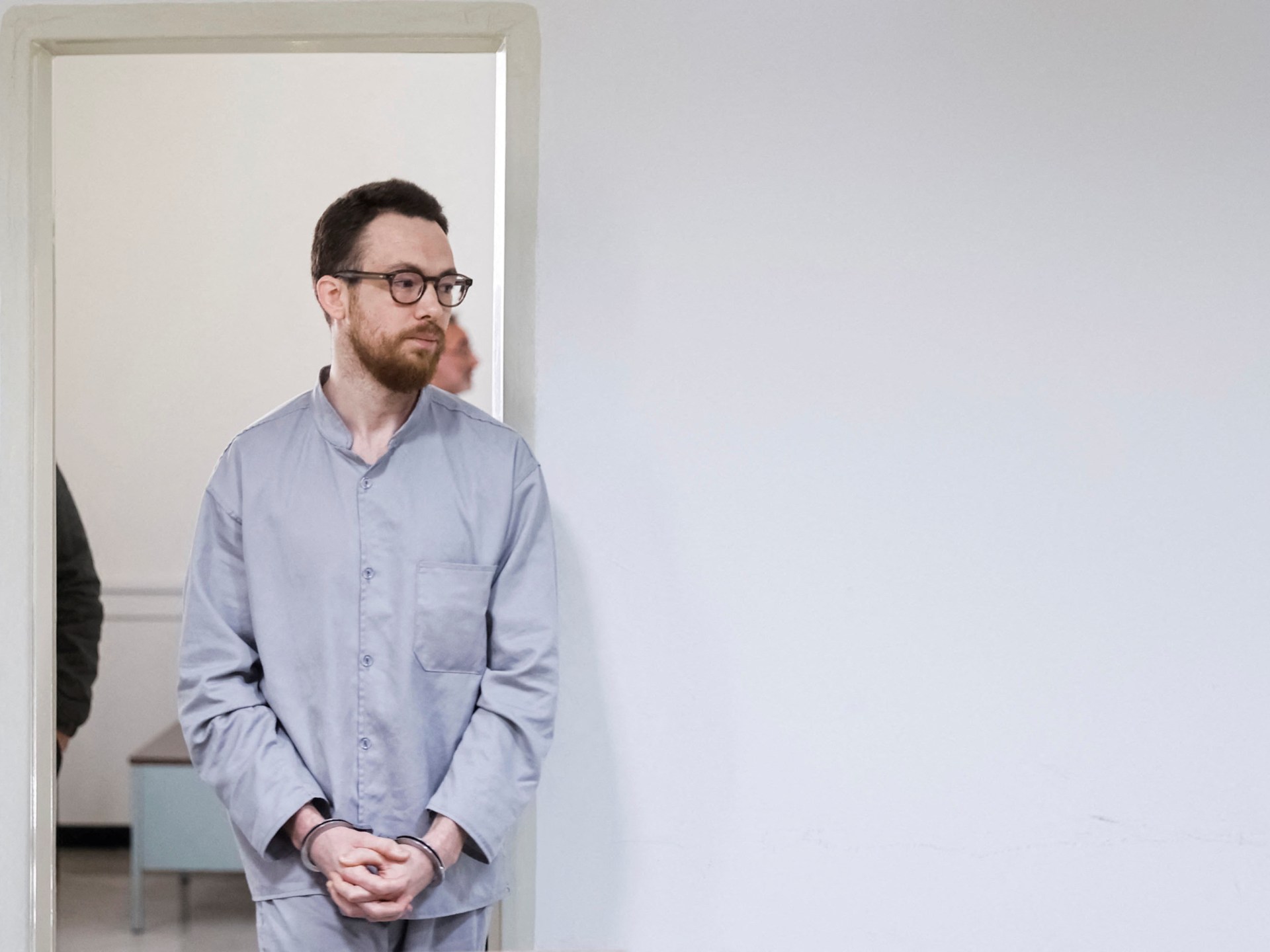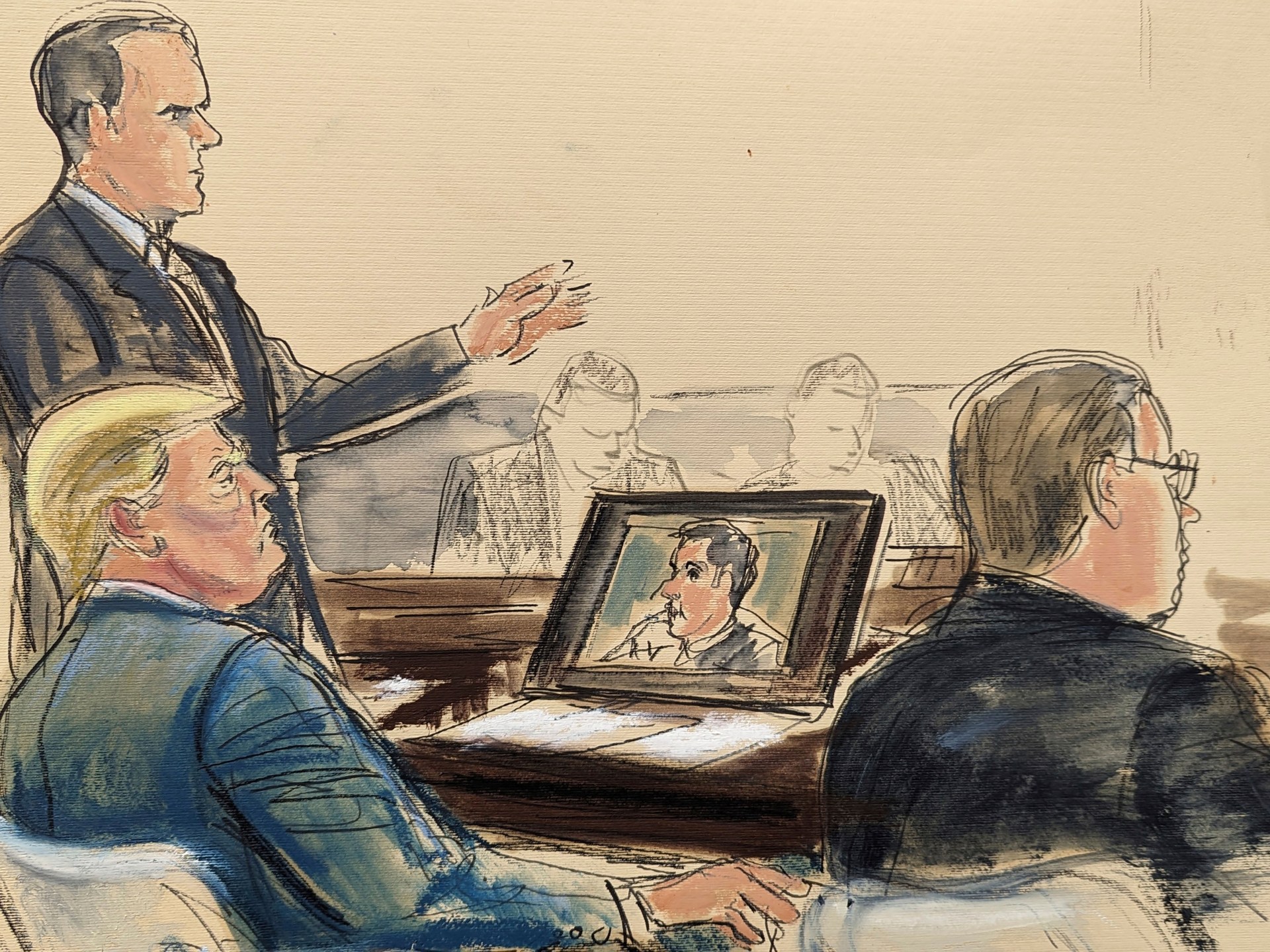
CARENTAN-LES-MARAIS, France (AP) — Shortly after D-Day in 1944, American soldiers heading off to fight Adolf Hitler's forces noticed a hungry French boy on the side of the road hoping for alms.
One by one, the men fished fragrant, colorful balls out of their pockets and placed them in Yves Marchais' hands. The six-year-old boy had never seen the strange fruits before, having grown up in Nazi-occupied France, where food was rationed and terror was omnipresent.
Delighted with his haul, the young Marchais counted them all – 35 – and hurried home to taste his first oranges.
However, the survivors in Normandy are also etched with memories of the massive Allied bombing raids that pulverized villages and towns such as Caen, Rouen and Le Havre, buried victims and turned the sky fiery red.
This week marks the 80th anniversary of the Allied invasion on June 6, 1944, when they broke through Hitler's western defenses and helped bring about Nazi Germany's surrender 11 months later. For French survivors of the Battle of Normandy, it evokes mixed feelings. They are eternally grateful for their liberation, but cannot forget how many French people lost their lives.
Marchais recalls how his family home in Carentan, Normandy, shook during the bombings, which sounded “like thunder,” and how his mother stunned him when, as they sought shelter in their cellar, she downed a bottle of strong Normandy cider, declaring as she finished it: “That's another one the Germans don't drink!”
“The Americans were gods to us,” recalls Marchais, now 86. “Whatever they do in the world, they will always be gods to me.”
DESTROYED CITIES IN NORMANDY COUNT THEIR DEAD
The invasion left around 20,000 civilians dead in Normandy as Allied troops fought their way inland, sometimes field by field through the green Normandy countryside that provided shelter for the German defenders. They did not reach Paris until late August 1944.
The Allied losses in the Normandy campaign were also horrific: 73,000 soldiers lost their lives and 153,000 were wounded.
The aim of the Allied bombing raids was to prevent Hitler from sending reinforcements and from getting his troops out of the “Atlantic Wall” of coastal defense and other bases that the German occupation forces had built using forced labor.
The list of Normandy towns destroyed and dead grew longer as the Allies advanced: Argentan, Aunay-sur-Odon, Condé-sur-Noireau, Coutances, Falaise, Flers, Lisieux, Vimoutiers, Vire and others. Leaflets scattered by Allied aircraft urged civilians to “LEAVE IMMEDIATELY! YOU HAVE NOT A MINUTE TO LOSE!”, but often missed their target.
Some Normans were furious. A woman from the bombed port city of Cherbourg described Allied pilots as “bandits and murderers” in a letter dated June 4, 1944, to her husband, who was being held prisoner in Germany, before her liberation.
“My dear Henri, it is shameful to massacre the civilian population as the so-called Allies do,” says the letter published by historians Michel Boivin and Bernard Garnier in their 1994 study on civilian casualties in the Normandy Manche region.
“We are in danger everywhere.”
NORMAN LOSSES 'SWEETEN UNDER THE CARPET'
French President Emmanuel Macron will commemorate civilian casualties on Wednesday at commemorations in Saint-Lo, a Normandy town that became a symbol of losses from Allied bombing when it was razed to the ground on June 6 and 7, 1944. According to the Boivin and Garnier study, the death toll was 352. Playwright Samuel Beckett called Saint-Lo “The Capital of Ruins” after working there for the Irish Red Cross.
Among the dead in Saint-Lo was Marguerite Lecarpentier's older brother Henri. She was 6 at the time. Henri was 19 and had been helping another man pull a young girl from the rubble when the city was bombed again. All three were killed. Marguerite's father later identified her brother's body “by his shoes, which were new,” she said.
When her family subsequently fled Saint-Lo, they passed through the remains of the city.
“It was terrible because there was rubble everywhere,” Lecarpentier recalled. Her mother waved a white handkerchief as she walked, “because the planes were constantly flying over us” and “so that we could be recognized as civilians.”
Nevertheless, Lecarpentier speaks without rancor about the Allied bombings. “That was the price we had to pay,” she said.
“It can't have been easy,” she added, “considering that they landed on June 6 and Saint-Lo was not liberated until July 18 and they lost an enormous number of soldiers.”
Historian Françoise Passera of the University of Caen and co-author of the book “The Normans at War: The Time of Trials, 1939-1945” says that for decades the civilian casualties in Normandy were overshadowed by the heroism and sacrifices of Allied soldiers in combat.
While local commemorations were held in many cities, she pointed out that it was not until 2014 that a French president – Macron's predecessor, François Hollande – paid national respects to the civilians killed in Normandy.
Since France had been bombed by its liberators until then, “this was not an issue that the French authorities could easily address,” Passera said.
“The civilian casualties were swept under the carpet in a way so as not to offend the Americans,” she said. “And so as not to offend the British.”
For the Normans, however, D-Day and its aftermath were “quite a jumble of emotions,” she said. “We cried with joy because we were liberated, but we also cried because there were dead bodies all around us.”






Recent Comments